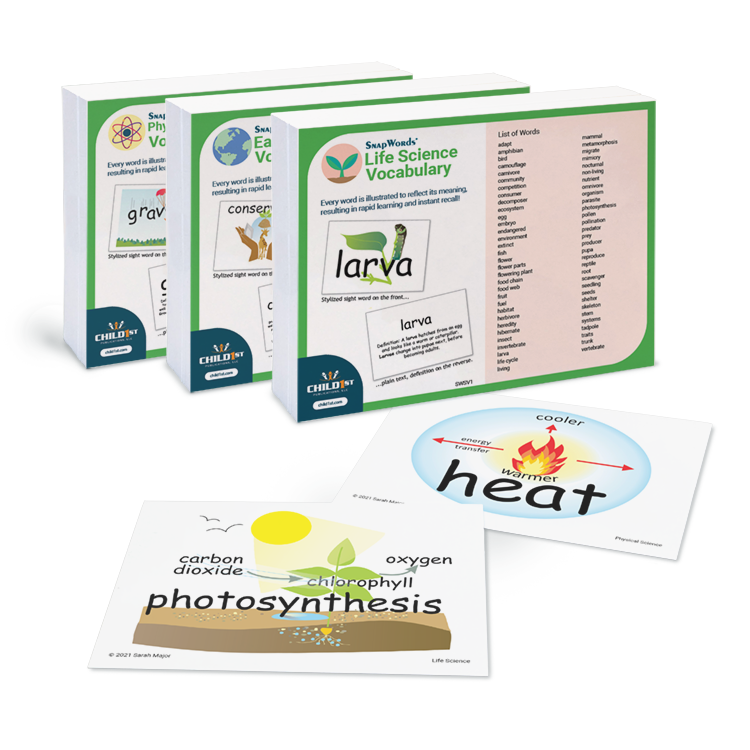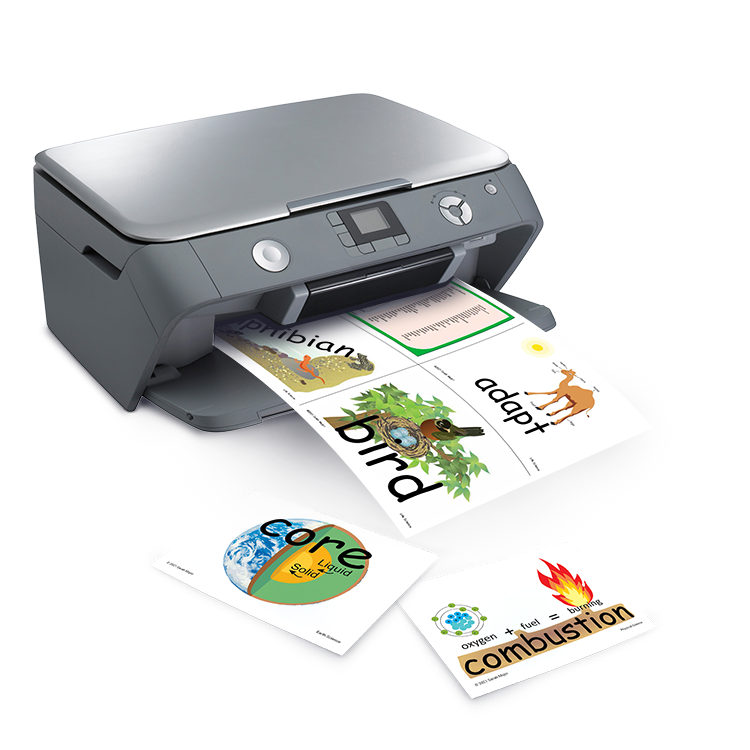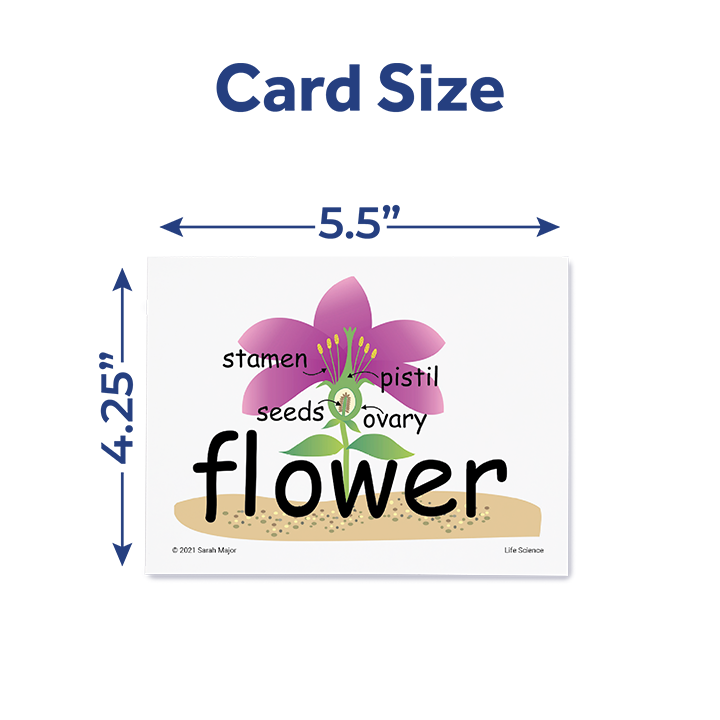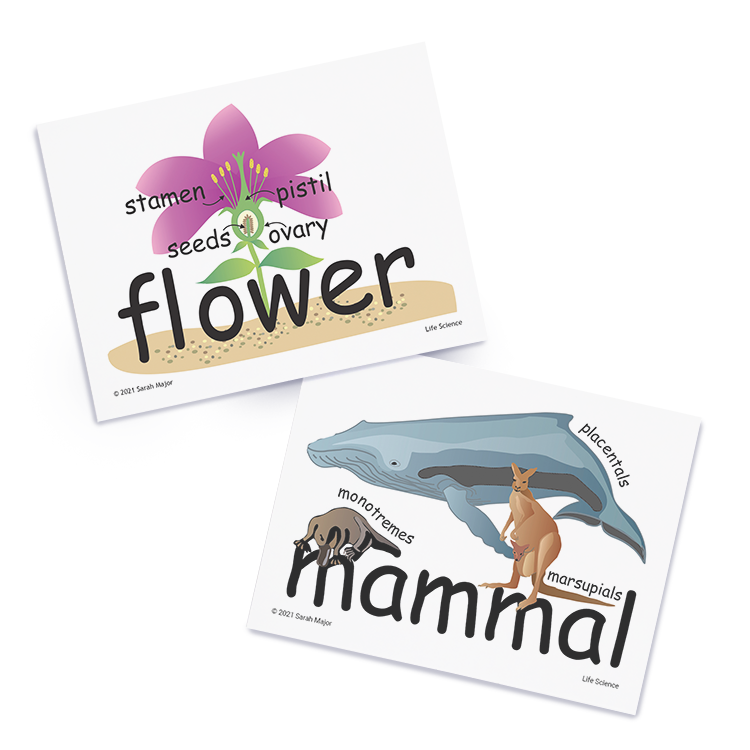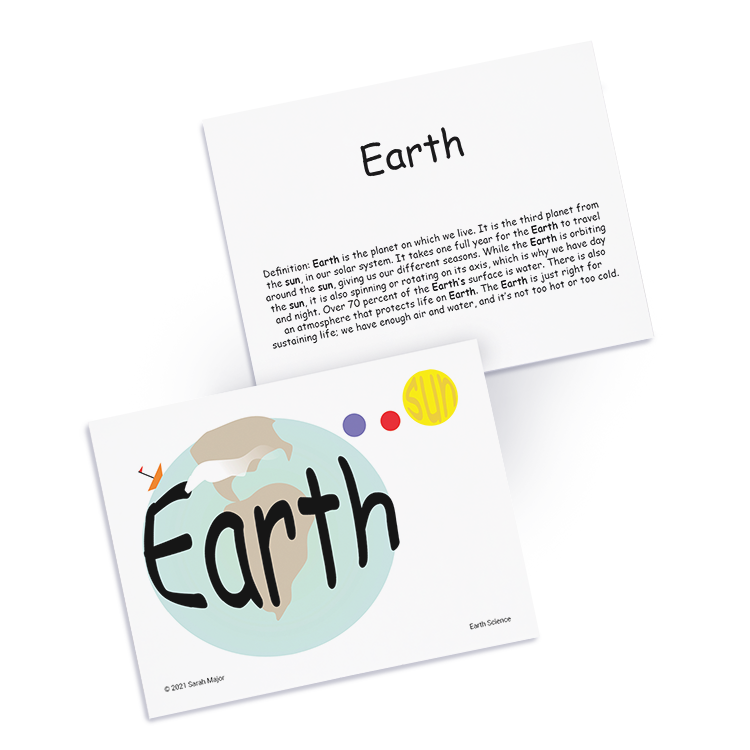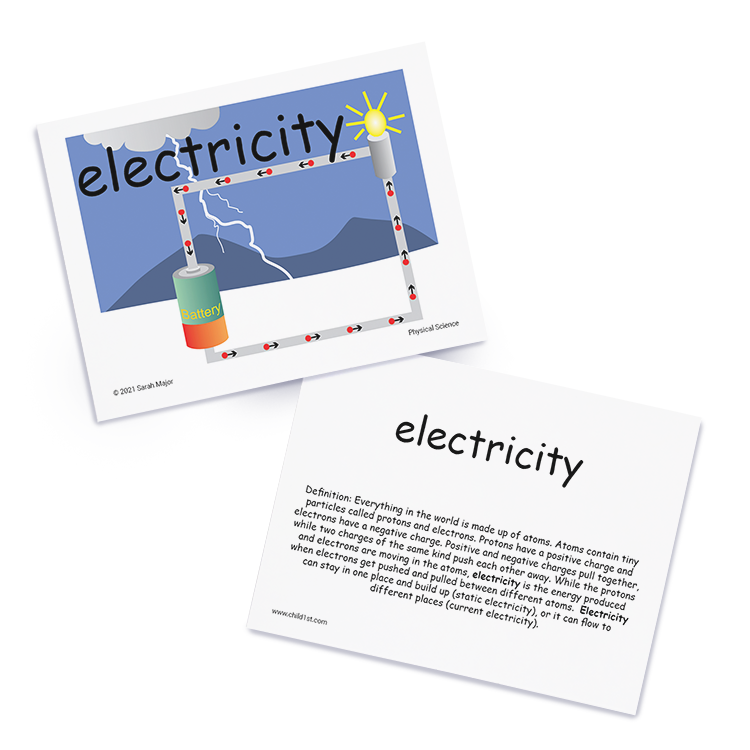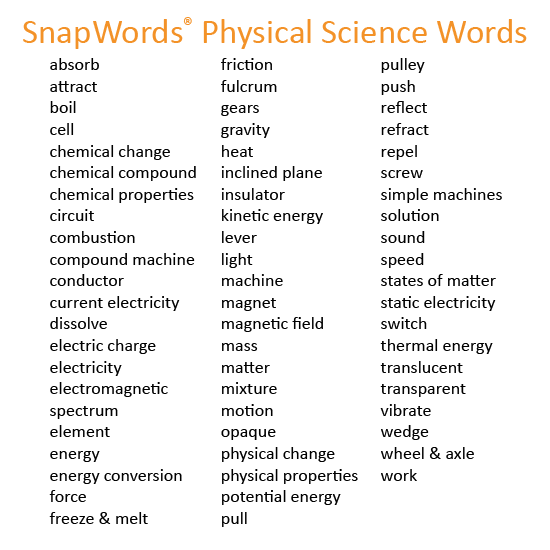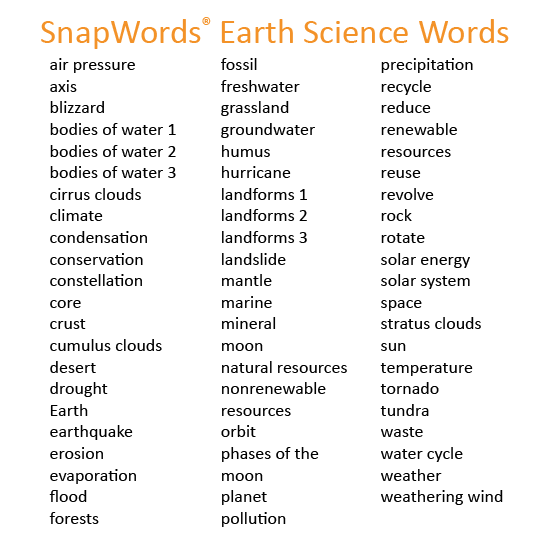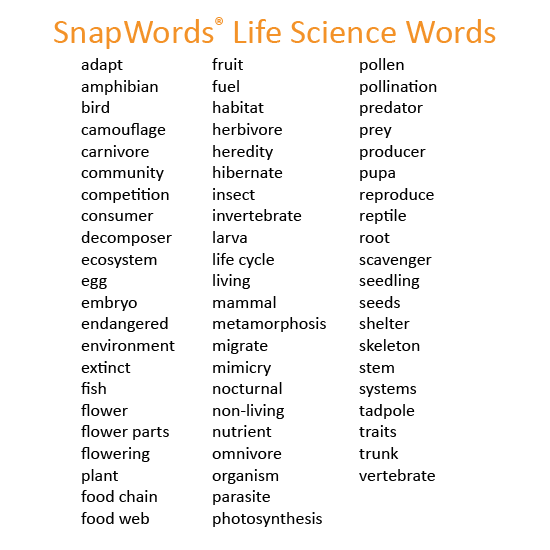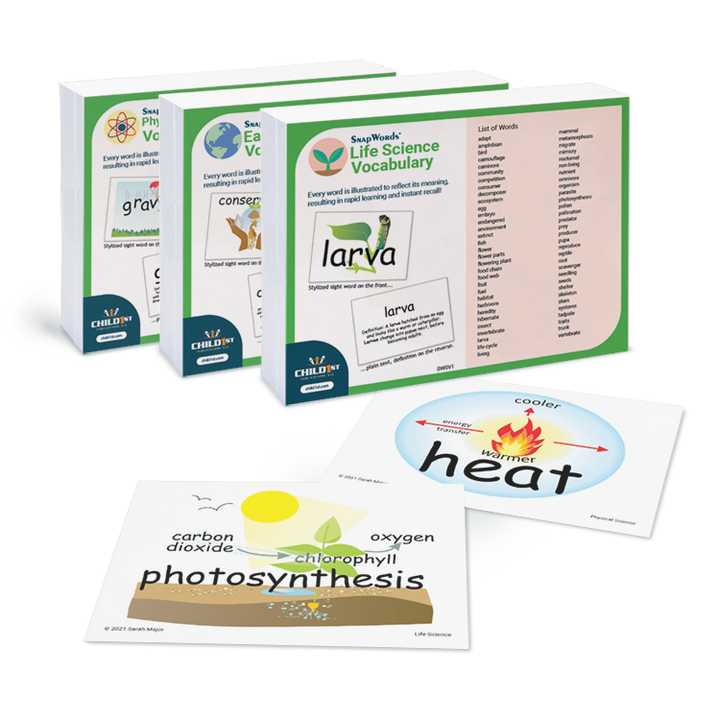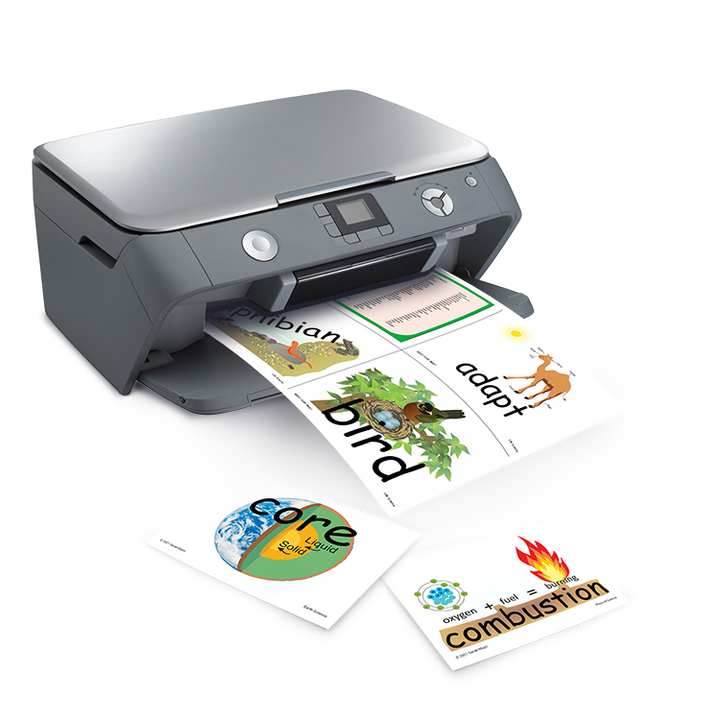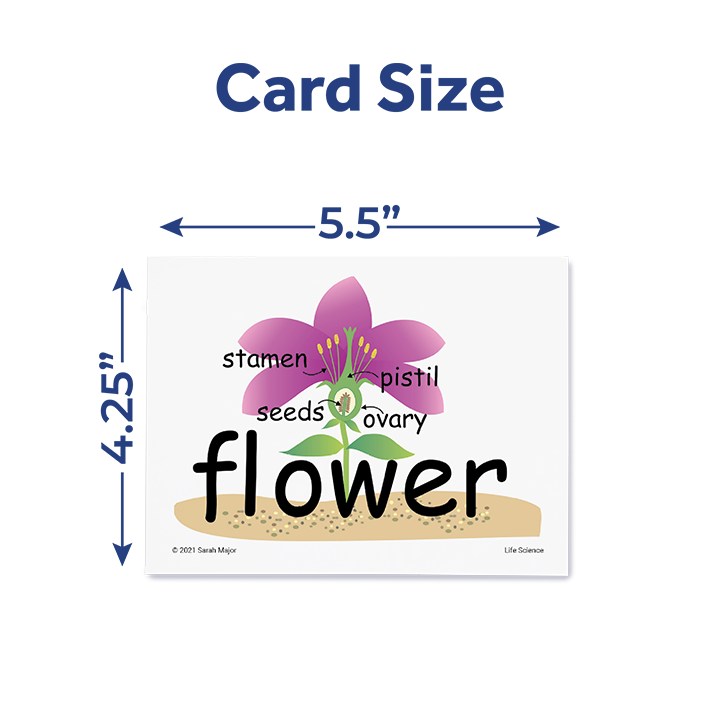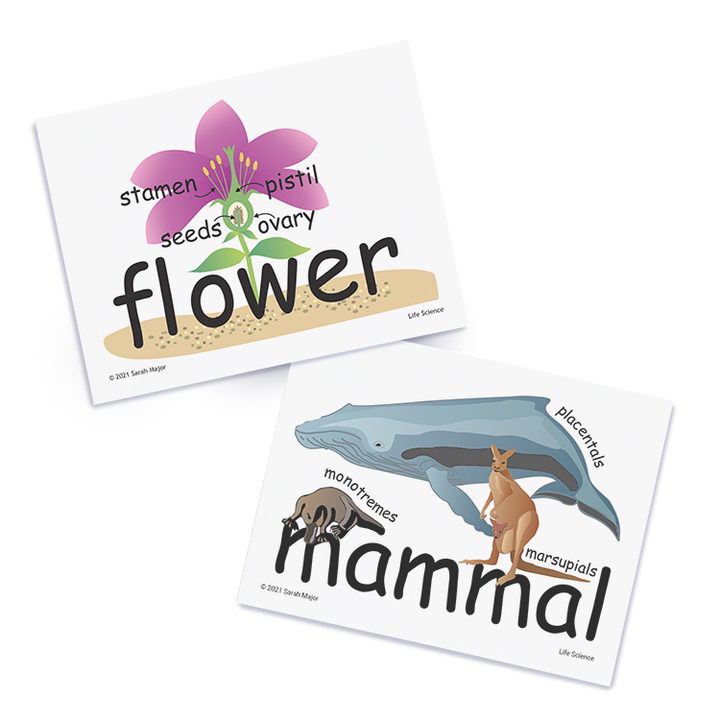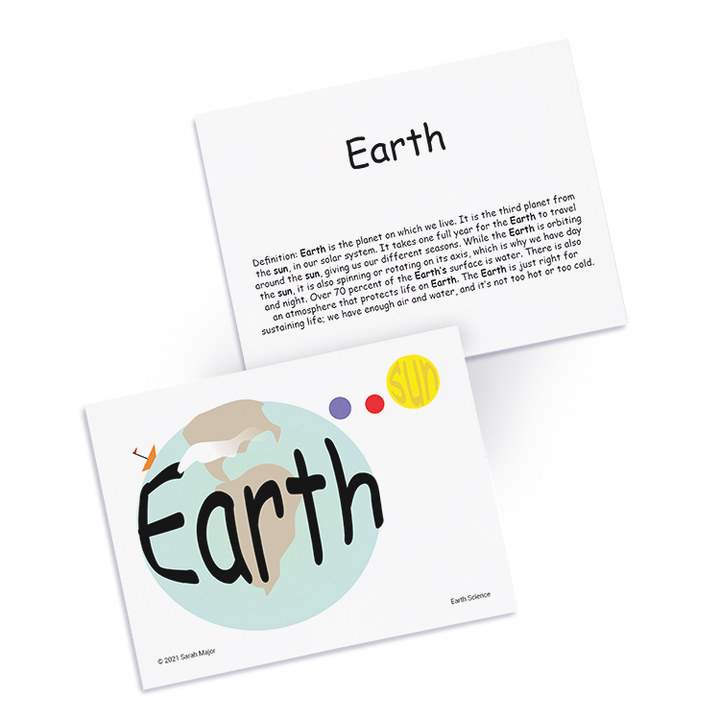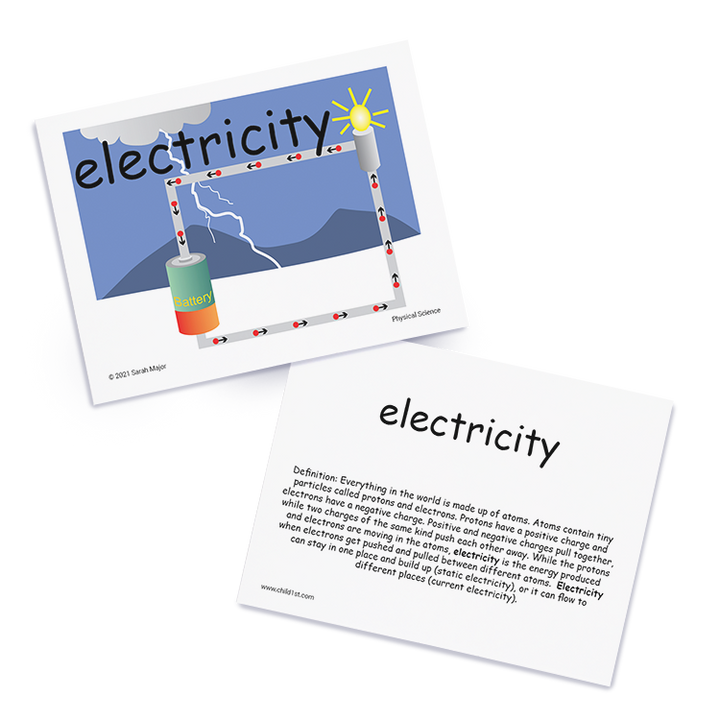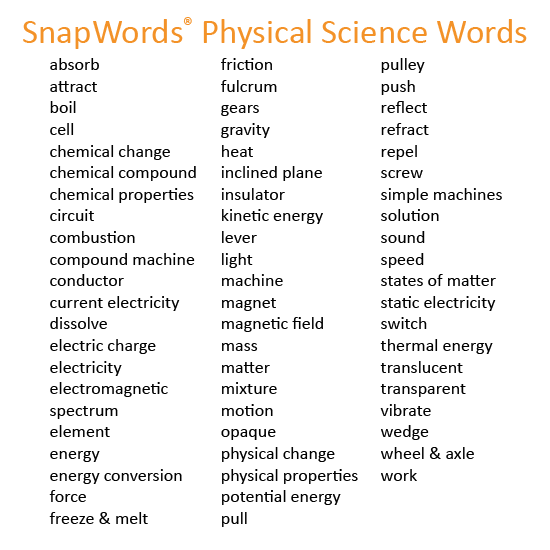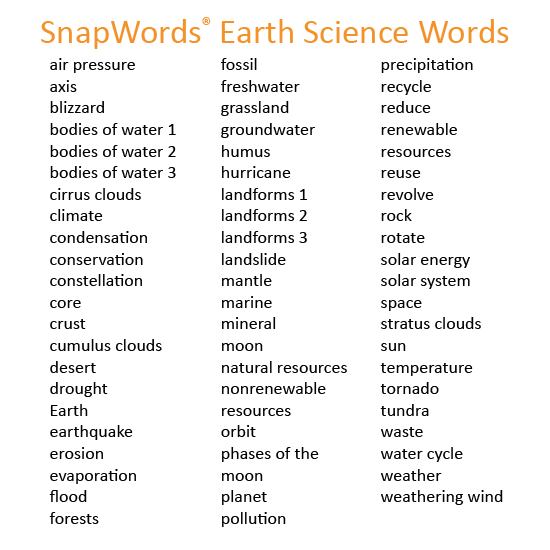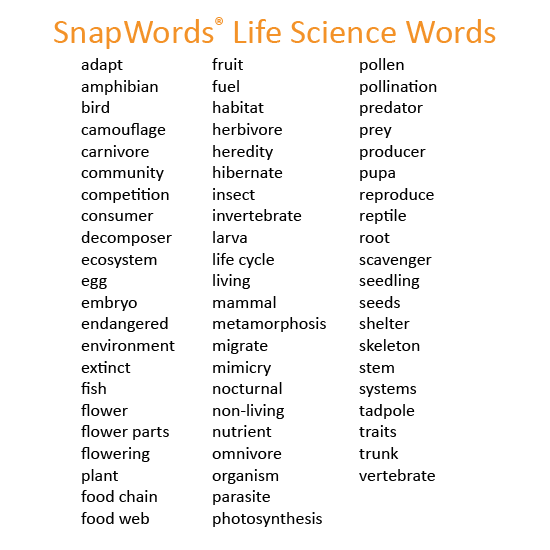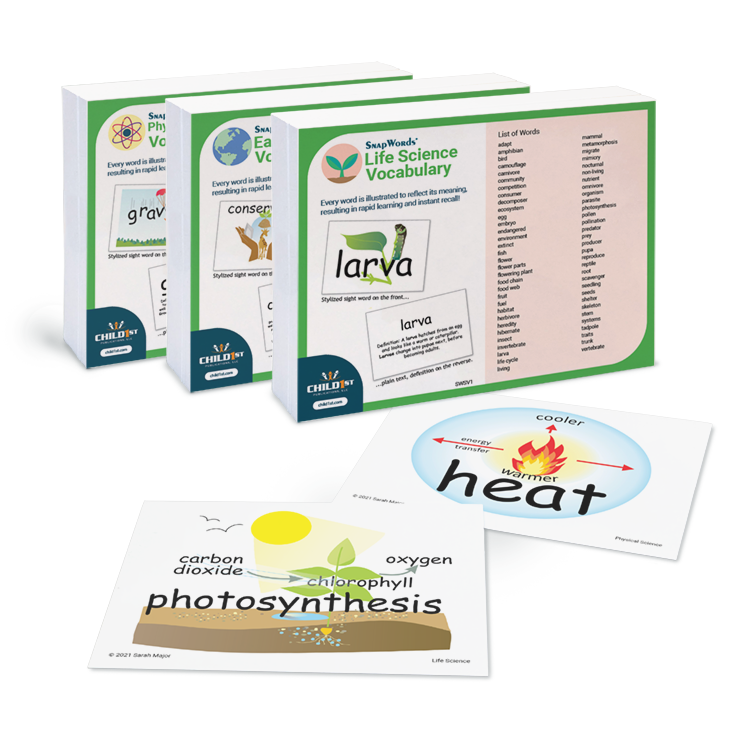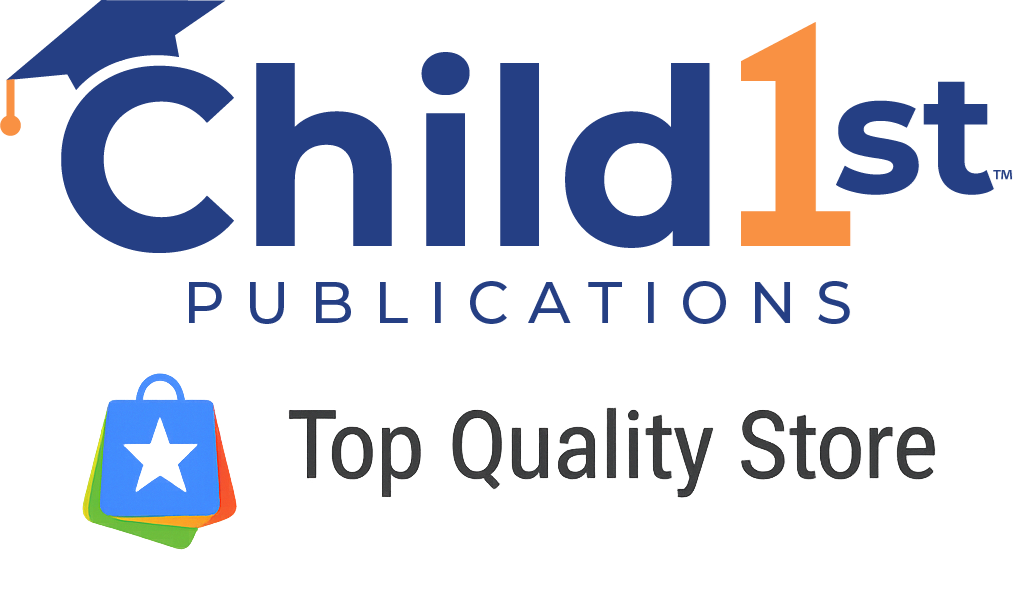Embark on an educational journey with SnapWords® Science Vocabulary Cards, an extension of our comprehensive SnapWords® collection. This specialized set encompasses three distinct categories: Life Science, Earth Science, and Physical Science. Beyond the focus on recognizing and reading science terms with fluency, these cards offer an enriching experience by providing detailed definitions on the reverse side, enhancing your understanding of the plain words. Explore the realms of science vocabulary with this invaluable resource designed to foster both literacy and scientific knowledge.
SnapWords® Science Vocabulary Cards are available in two formats:
- Physical - teaching cards measuring 5.5" x 4.25"
- Download - printable PDF file of teaching cards
How it Works
Unlock the secrets of science with SnapWords® Science Vocabulary Cards. Not only do these cards facilitate the recognition and fluent reading of scientific terms, but they also provide detailed definitions on the reverse side, adding depth to your understanding of the plain words.
Dive into the learning experience by studying the front of the cards together, focusing on the captivating images that aid in imprinting the words into visual memory for optimal recall.
Take the exploration further by delving into the definitions on the backs of the cards, fostering connections between related words within the set. For instance, connect herbivore with omnivore and carnivore, or explore the interplay between predator and prey. When delving into the water cycle, link the fundamental processes of condensation, evaporation, and precipitation. Uncover the intricacies of electricity by connecting pivotal terms such as circuit, conductor, and insulator. By teaching words in related groups, you'll enhance comprehension and deepen your students’ grasp of essential science terms.
What’s Included
· The Science Vocabulary Kit includes all three sets of SnapWords® Science Vocabulary Cards, totaling 189 words, covering:
Life Science, Earth Science, & Physical Science



